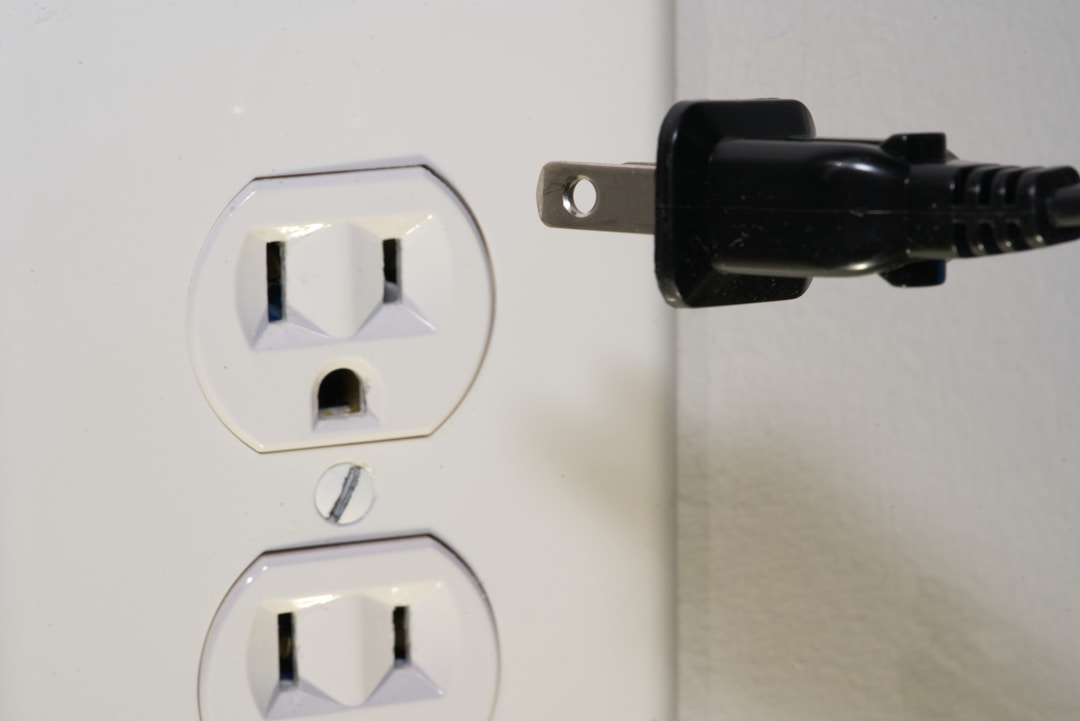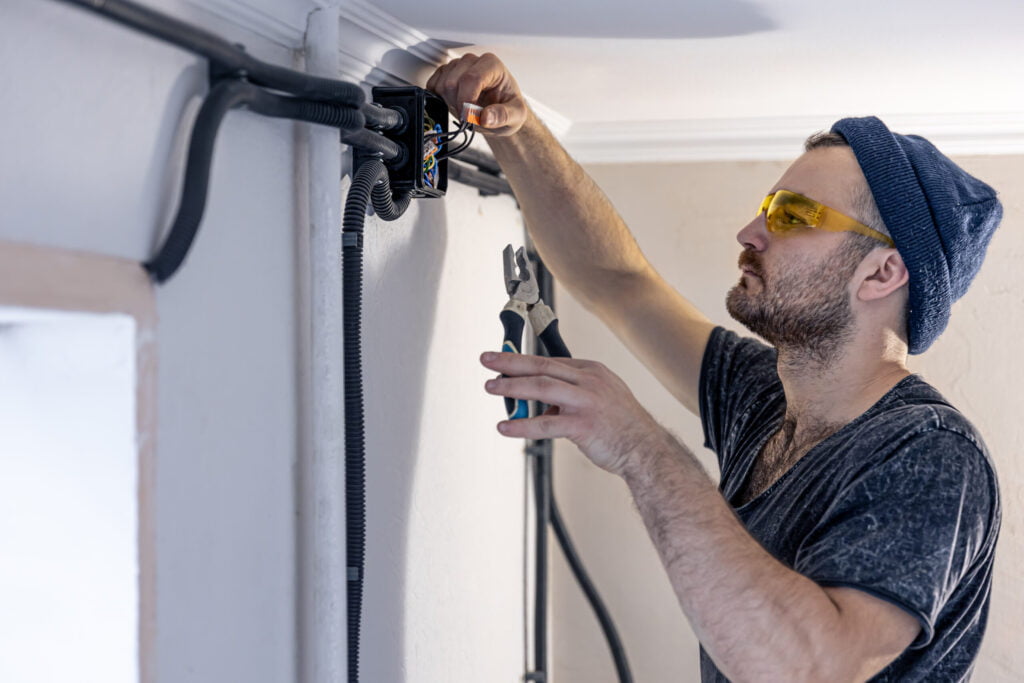Whether you live in an older house with aged wiring or a brand-new build, electrical malfunctions can occur unexpectedly. One of the most common and hazardous electrical issues that homeowners face is an electrical short. This happens when the flow of electricity is interrupted by a disruption in the wiring system, causing a sudden surge of electrical power. This surge can damage your home’s electrical systems and, in extreme cases, even lead to destructive fires.
It’s important to catch the signs of an electrical short early to avoid more severe, possible life-threatening consequences. In this article, we will delve deeper into what an electrical short is and explore the common signs that indicate there could be an issue in your home. Keep reading to learn more about these concerning issues.
Understanding Electrical Shorts

An electrical short, or short circuit, is a type of electrical fault that happens when there is a direct pathway between two points in an electrical circuit that were not supposed to connect. This direct pathway allows little resistance to the electrical flow, so a large amount of current passes through. This can overload the electrical devices or wiring in this path, causing them to heat up. In extreme instances, the heat can cause fires. Understanding the dynamics of how electricity works and recognizing potential risk factors associated with electrical shorts can help Texas homeowners avoid potential hazards and costly repairs.
We’ll also discuss how to identify certain issues, such as warm outlets or frequent circuit breaker trips, which could signify a short circuit. Always exercise caution when dealing with electrical issues. Some may be fixable with simple tools and instructions, and others may require a professional electrician in Austin.
Despite the risk associated with electrical shorts, most cases don’t result in hazards because the electrical system is designed with safeguards. For example, most electrical systems feature circuit breakers that trip and shut down the power supply when they detect an irregular surge of electrical current. The purpose of these circuit breakers is to stop the flow of electricity before it can generate enough heat to cause a fire.
Detecting Key Signs
Knowing the key signs of an electrical short can help speed up the detection process and prevent further damage to your home. Your senses can be crucial tools for this task. For instance, a smell of burning or a visible spark could indicate an electrical short. Constantly tripping circuit breakers, abnormally warm switches or outlets, and inconsistent power supply are all symptoms of the possibility of an electrical short.
Keep in mind that while some of these occurrences may seem relatively harmless, they can be indicators of larger underlying problems. Therefore, never dismiss such signs as flukes. If your home exhibits these signs recurrently, it’s certainly time to call in an electrician to assess and address the situation. Furthermore, because an electrical short can cause a fire in the home, being vigilant in recognizing and acting upon these signs can be lifesaving.
To understand what causes these signs, it’s essential to pay attention to the underlying factor: the influx of electricity. An electrical short causes an abnormal rush of electrical current, leading to these noticeable signs. We will further explore these signs in the upcoming sections.
Frequent Tripping of Circuit Breakers
Undoubtedly, one of the most signature signs of an electrical short is the frequent tripping of circuit breakers. As mentioned previously, circuit breakers are designed to respond to irregular surges of electrical current by tripping and shutting down the power supply to avoid hazards. If this happens once in a while, it could be due to a one-off situation, such as plugging in too many devices at once. However, if the circuit breaker trips too often, it may be an indication of an electrical short.
Moreover, if flipping the breaker back on results in an immediate trip, it’s a clear sign of a short circuit. Dealing with electrical issues such as these may seem daunting, but having a basic understanding will help you handle the situation more efficiently and safely. If the breaker further refuses to stay on, it’s a clear indication of a direct short, and you must call an expert right away.
The situation becomes more complicated when the breaker does not trip, and the short becomes a latent issue in the system, leading to other signs like hot spots and the odor of burning plastic. This may be an indication that the protective mechanisms of your property, such as breakers or fuses, are compromised and might not prevent a likely fire hazard from occurring.
Unstable Light Fixtures

Have you ever noticed a flickering light in your home? If you’re certain that it’s not due to a faulty bulb, electrical shorts could be the culprit. Flickering or dimming lamps can indicate an inconsistent and uncontrolled flow of electricity, which is a trademark of an electrical short. It may not appear as a serious issue initially, but over time, it can eventually evolve into a more problematic scenario, such as an electrical fire.
In other cases, the issue may not be flickering but rather a bulb that changes its brightness. This is due to variations in electricity brought about by a short. If you notice a difference in lighting levels, it’s highly recommended to investigate the issue and determine the cause.
A qualified electrician can help determine if there is an underlying issue causing these problems with your fixtures.
Warm or Discolored Outlets and Switches
Outlets and switches tend to remain at a regular temperature regardless of how much power is drawn through them. If you notice that a switch or outlet is getting warm, especially one that isn’t in regular use, it could be a sign of an electrical short. Discolored switches or outlets are also an indication of potential electrical short as excessive heat could have caused the discoloration.
Remember, do not ignore any signs of heat or discoloration around these areas. It’s better to have them inspected by a professional to ensure that there’s no risk of a short circuit or an electrical fire.
If you notice any of these signs in your home, do not delay—contact an electrician immediately. It’s always better to be safe than sorry, especially when it comes to potential electrical fires.
Electrical Shock
One clear and alarming sign of a potential electrical short is feeling an electric shock when touching an appliance. If you experience a minor shock or tingling sensation when touching an appliance, there is likely a ground fault somewhere along the circuit.
The shock occurs due to electricity escaping the designed path and moving along an unintended path, potentially including you. Fortunately, these shocks are usually minor, but they can still be quite dangerous, especially if the person experiencing the shock has a weak heart or touches a large appliance.
The moment you notice a problem, switch off the main power supply to that appliance or area of your home. Then immediately contact an electrician to handle the situation. Ignoring it could result not only in serious injury due to electrical shocks but also in electrical fires.
The Burning Smell

Lastly, but certainly not the least important sign of a potential electrical short is a burning smell. This infamous “electrical” smell is often the odor of plastic burning and might signal that the short is making the wire insulation get too hot and start to burn.
If you ever notice this strong smell in your home, shut off the power immediately and call a professional. The longer this situation persists, the greater the risk of a more serious incident, such as an electrical fire.
Electrical shorts are not to be taken lightly. While the signs can range from minor to severe, they all require the attention of a professional to prevent any further damage to your home or, in the worst-case scenario, prevent a fire from breaking out.
By understanding the signs of an electrical short, you can take swift action to address it, reducing the risk and possible damage to your property. Always remember that handling electricity isn’t a DIY method; it’s always better to play it safe and hire a professional.












